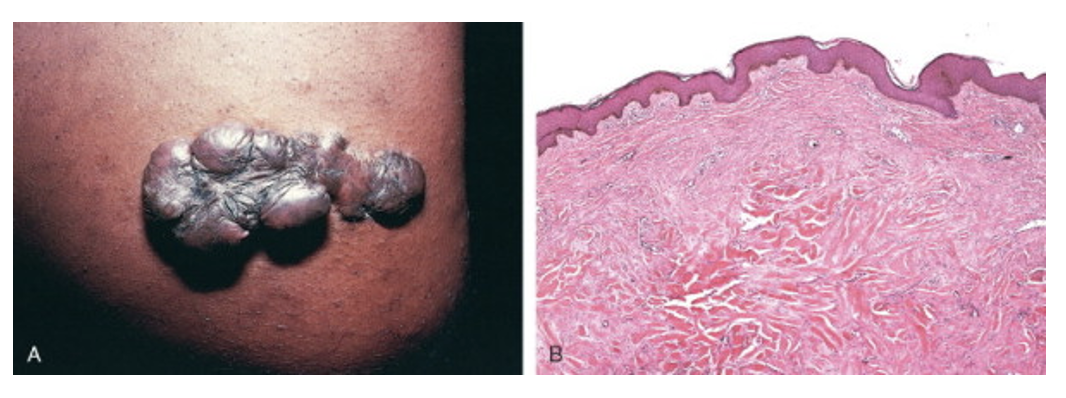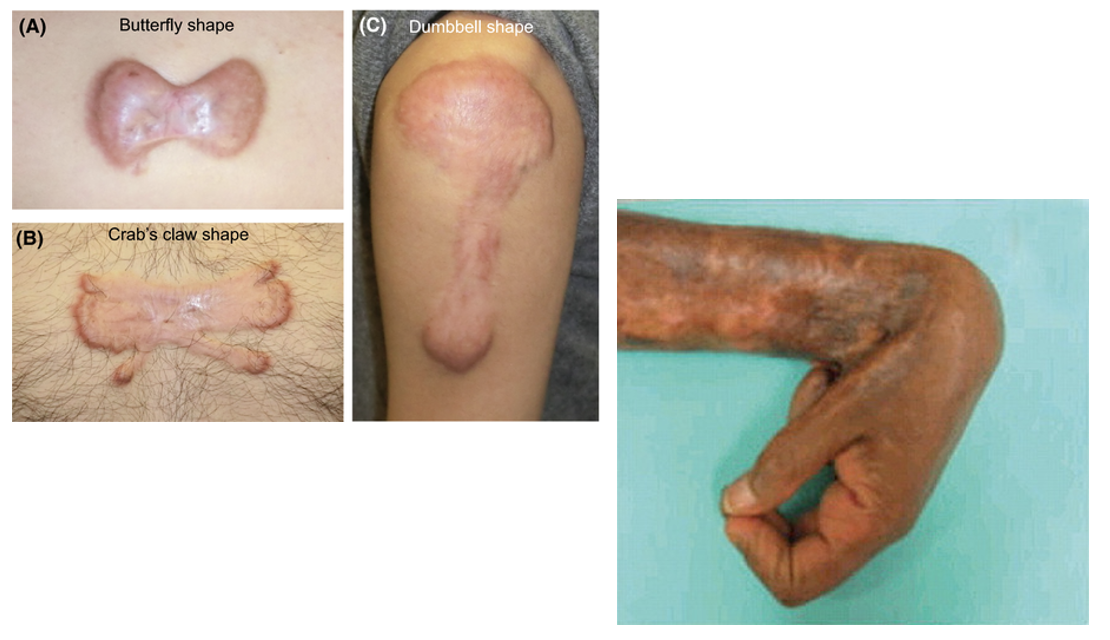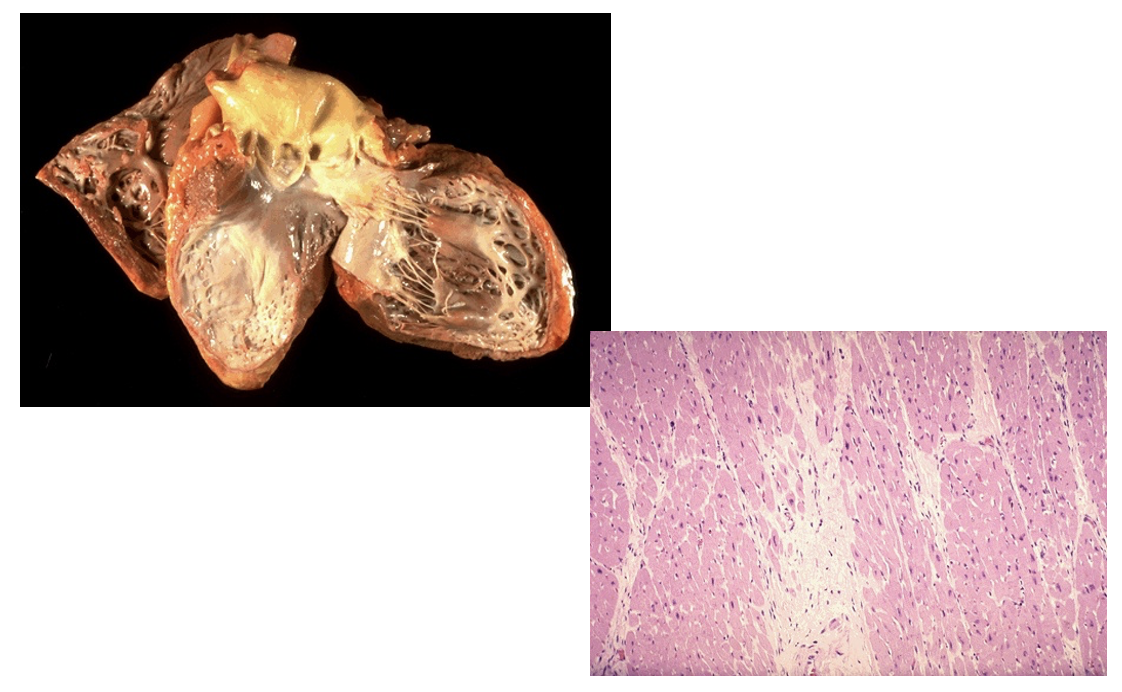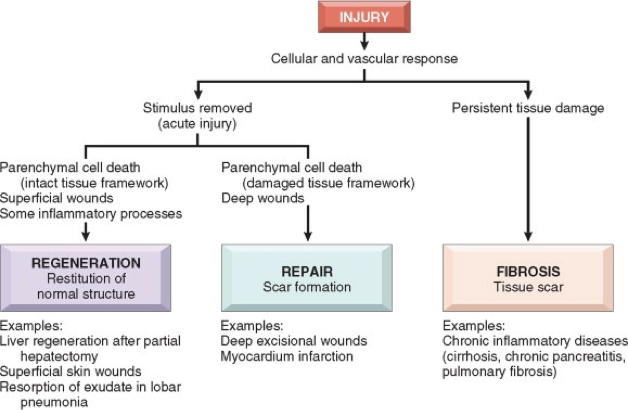Tissue Regeneration and Repair
1/58
There's no tags or description
Looks like no tags are added yet.
Name | Mastery | Learn | Test | Matching | Spaced |
|---|
No study sessions yet.
59 Terms
Over time, cells and tissue are damaged. Injury to cells and tissues sets in motion events that contain the damage and initiate healing via two competing processes:
Regeneration
Repair
___________: Replacement of cells and tissues to produce a restored functional state
Regeneration
____________: Substitution of the original cells and tissue by fibrous tissue (scar/collagen)
Repair
Which of these two processes (that initiate healing) occurs depends on the extent of the damage and the type of tissues injured. Cells which normally divide can more easily _________, while those that are post-mitotic (non-dividing) generally do not _________ and simply ________ the tissue.
regenerate
regenerate
repair
Continuously dividing (labile) cells:
Proliferate throughout life
Epithelia and hematopoietic cells
Example of continuously dividing (labile) cells:
Epidermis
Epithelia and hematopoietic cells
Quiescent (stable) cells:
Considered to be G0 but can be driven into G1 after cell loss
Parenchymal cells of liver, kidney, and pancreas
Endothelial cells, fibroblasts and smooth muscle
Example of Quiescent (stable) cells:
Hepatocy
Parenchymal cells of liver, kidney and pancreas
Endothelial cells, fibroblasts and smooth muscle
Non-dividing (permanent) cells:
Not in the cell cycle
Nerve, cardiac and skeletal muscle
Example of non-dividing (permanent) cells:
Neuron
Cardiac myocyte
Nerve, cardiac and skeletal muscle
Where injury is to labile or stable parenchymal cells and is not extreme, the cells can be replaced by normal functioning cells in a process called ______________.
Regeneration
Where does regeneration occur?
Epithelia (skin) and in a number of solid organs, most notably the liver
Extensive liver damage (over 50%) can be ______________ in normal, healthy individuals. This is moderated by numerous ________ and, remarkably, once the normal volume of liver is reached, the tissue will stop its regrowth and regeneration.
restored and regenerated
growth factors
Where injury is to non-dividing cells, is accompanied by other pathologies, or is too large, then the cells cannot be replaced and collagenous scar tissue is formed. This is a process called ________.
Repair
Where does repair occur?
Many tissues, including the nervous system and the heart
This _____ process is initiated by inflammation in the damaged area and is mediated by the extracellular matrix (ECM).
repair
What is the extracellular matrix (ECM) composed of?
Tissue fluid, ground substance and fibers (primarily collagen)
Where is the extracellular matrix found?
Outside of the cells
What are the functions of the extracellular matrix (ECM)?
Mechanical support
Control of cell growth
Maintenance of cell differentiation
Scaffolding for tissue renewal
Establishment of tissue microenvironments
Storage and presentation of regulatory molecules
Severe or persistent tissue injury and accompanying inflammation with damage both to _______________ leads to a situation where regeneration cannot occur. This inititates the repair mechanisms for ______________________.
parenchymal cells and to the stromal framework
granulation tissue and scar formation
What does inflammation involve?
Multiple white blood cells (mast cells, neutrophils, macrophages)
Many molecular signaling pathways
____________ is newly formed connective tissue that grows over a wound.
Granulation tissue
Granulation tissue contains numerous _________ producing collagen and other matrix products that facilitate healing.
fibroblasts
Granulation tissue has an ingrowth of ____________ to support this new tissue
new blood vessels (angiogenesis)
Granulation tissue also contains ____________ to remove the damaged tissue.
white blood cells (macrophages)
__________ fills in the space produced by a wound or disease process that cannot be replaced by regeneration of nearby cells.
Scar formation
The first step of scar formation is ________ formed by collagen production from migrating and proliferating fibroblasts. Later, the fibrotic scar can be remodeled with __________________.
fibrosis
stronger, parallel collagen networks
What are the steps involved in scar formation?
Inflammation
Angiogenesis
Migration and proliferation of fibroblasts
Fibrosis (matrix deposition and collagen synthesis)
Scar remodeling
Scar remodeling:
Connective tissue remodeling is accomplished by achieving a new balance between ________________.
collagen synthesis and degradation
Scar remodeling:
Net collagen accumulation depends on increased synthesis and decreased degradation controlled by __________________.
matrix metalloproteinases (MMPs)
Scar remodeling:
Wound strength is approximately ___ by the end of the first week.
10%
Scar remodeling:
Would strength is approximately ___ by the third month.
80%
Timing of normal (non-scar) cutaneous wound healing occurs in three phases:
Inflammation
Proliferation
Maturation
Cutaneous wound healing
Healing by _____________:
The healing of a clean surgical incision which causes only a small disruption of the epithelial basement membrane and the death of only a limited number of cells; thereby epithelial regeneration _______ over fibrosis.
first intention (primary union)
predominates
Cutaneous wound healing
Healing by ____________:
The healing of a more extensive wound such as an infarct, ulceration or mechanical trauma where there is more extensive cell loss and parenchymal cells alone _______ the normal architecture.
second intention (secondary union)
cannot restore
Cutaneous wound healing
What is an example of healing by first intention?
Skin ulcer
Cutaneous wound healing
What is an example of healing by second intention?
Scar
Pathological aspects of wound healing:
What are the risks associated with pathological wound healing?
Infection
Nutritional deficiency
Glucocorticoids
Type of tissue injured: tissues with non-dividing cells have more scar production
Location of injury
Amount of necrosis

Pathological aspects of wound healing:
What does this example depict?
Hypertrophic scars and keloids – excess collagen

Pathological aspects of wound healing:
What does this example depict?
Scar contraction

Pathological aspects of wound healing:
What does this example depict?
Fibrotic scars after myocardial infarction

Pathological aspects of wound healing:
What does this example depict?
Fibrotic scars in liver cirrhosis

Conclusion/summary flow chart (review all/read over)
Tissue Regeneration vs. Tissue Repair:
Regeneration involves the replacement of damaged cells and tissues with new, functional cells that restore normal function. This occurs in tissues with continuously dividing (labile) cells like skin epithelia and liver tissue.
Repair involves the substitution of damaged tissue with fibrous tissue (scar/collagen) rather than functional cells. This typically occurs in tissues with non-dividing cells or when damage is too extensive.
What is tissue regeneration?
Replacement of damaged cells/tissues with new functional cells that restore normal structure and function
What is tissue repair?
Substitution of damaged tissue with fibrous tissue (scar/collagen) rather than functional cells
Which process better restores tissue function?
Regeneration - because it replaces damaged cells with the same functional cell type
What types of cells can regenerate?
Labile cells (continuously dividing) like epithelia and hematopoietic cells, and stable cells (quiescent) like liver, kidney, and pancreas cells
What types of cells typically undergo repair instead of regeneration?
Permanent (non-dividing) cells like nerve, cardiac, and skeletal muscle cells
What triggers the repair process instead of regeneration?
Severe or persistent tissue injury with accompanying inflammation
What inflammatory cells are involved in wound healing?
Mast cells, neutrophils, and macrophages
Inflammation initiates repair through:
Recruiting white blood cells (mast cells, neutrophils, macrophages)
Activating molecular signaling pathways
When severe/persistent, triggers repair mechanisms leading to granulation tissue and scar formation rather than regeneration
What is granulation tissue?
Newly formed connective tissue containing fibroblasts, new blood vessels (angiogenesis), and white blood cells (macrophages)
How does granulation tissue differ from scar tissue?
Granulation tissue: temporary, highly vascular, contains active cells, eventually matures to scar tissue
Scar tissue: permanent, less vascular, mainly organized collagen (lacks specialized structures), results from remodeling of granulation tissue
What is healing by first intention?
Healing of clean surgical incisions with minimal tissue disruption where epithelial regeneration predominates
What is healing by second intention?
Healing of extensive wounds (infarcts, ulcers, trauma) where there's significant tissue loss requiring scar formation
Which type of healing leaves a permanent scar?
Second intention healing
What are specific pathologies associated with pathological wound healing? (risks)
Hypertrophic scars and keloids (excess collagen)
Scar contractures
Fibrotic scarring in organs (e.g., liver cirrhosis, cardiac fibrosis)
Chronic non-healing wounds
Excessive inflammation leading to tissue damage
What is the key difference between normal and pathological scarring?
Pathological scarring involves excessive collagen production or abnormal remodeling leading to functional impairment